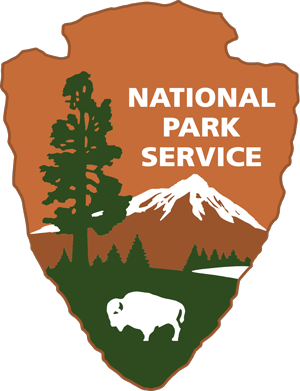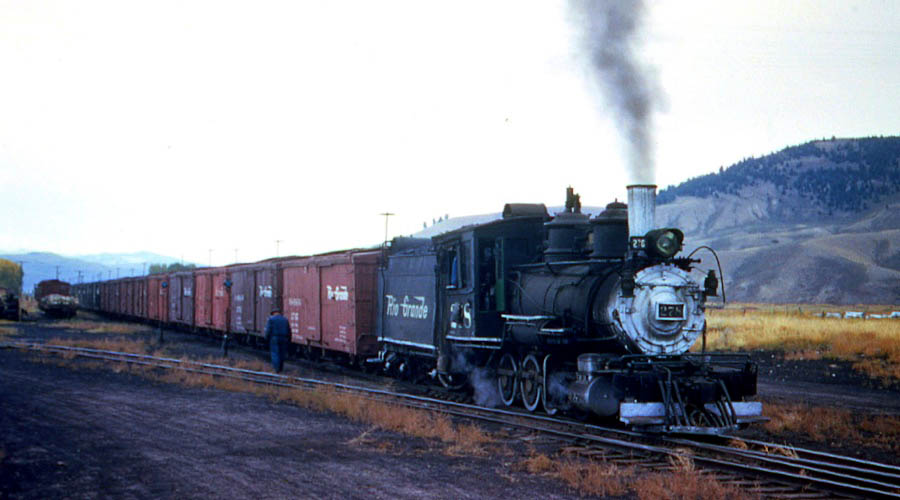
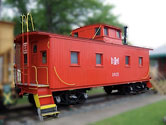




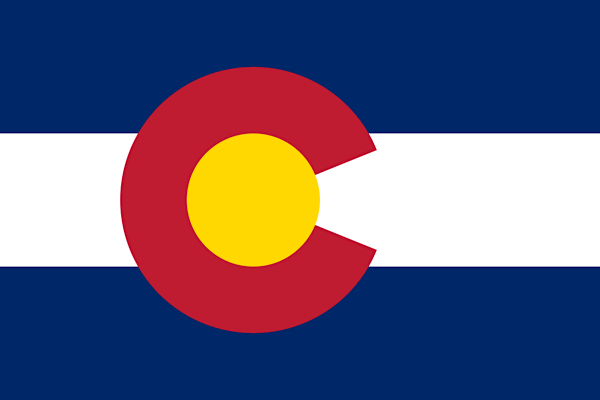


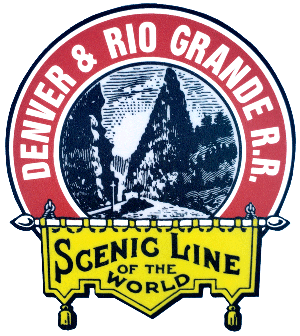 |
Cimarron Canyon Rail ExhibitBlack Canyon of the Gunnison National Park |
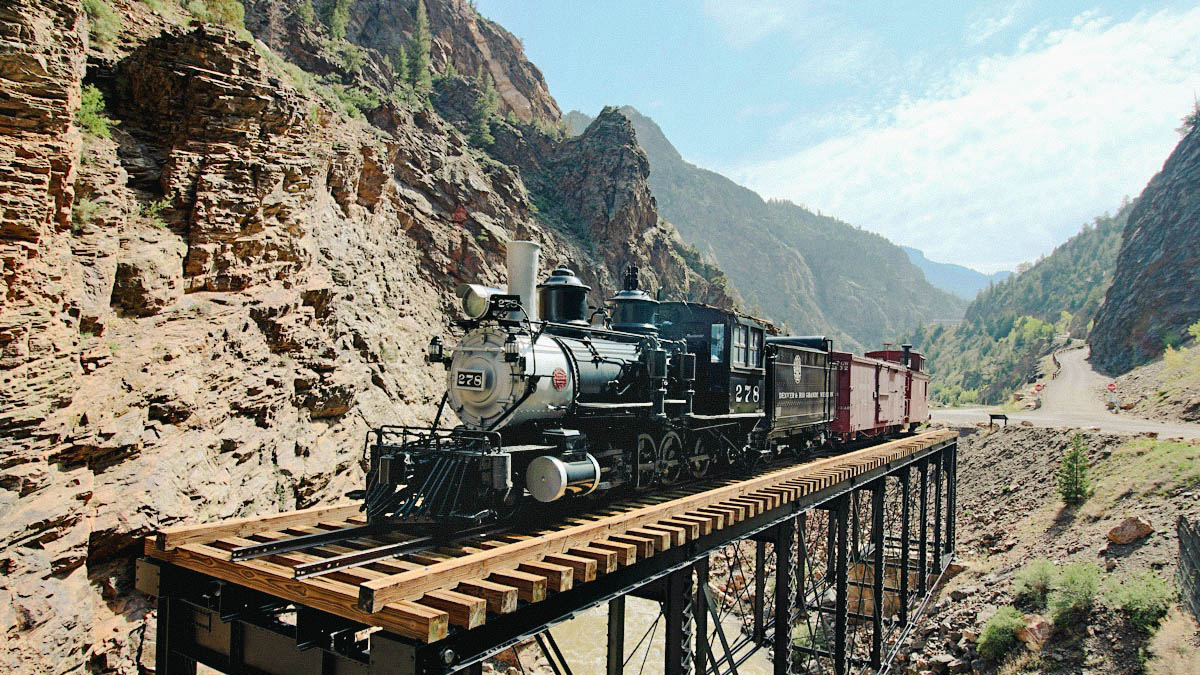
Cimarron, Co / May 2023 / RWH

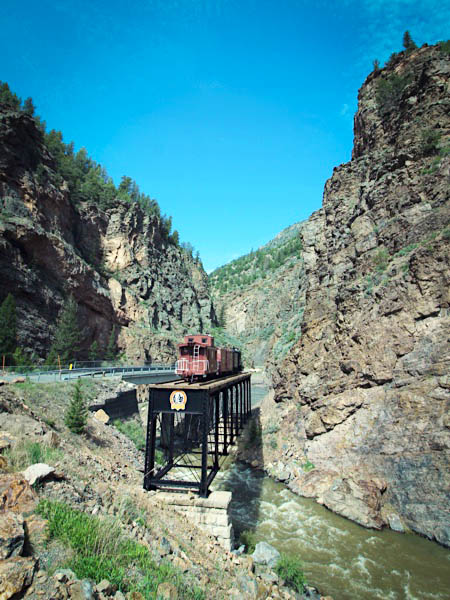
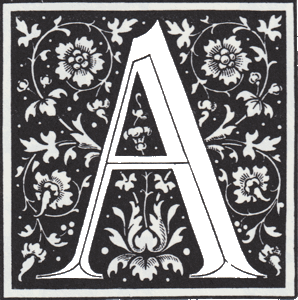 t the mouth of Cimarron Creek, just upstream from where it spills into the Gunnison River, stands a reminder of bygone days in railroading. Locomotive #278, its coal tender, a boxcar, and caboose stand atop the last remaining railroad trestle along the Black Canyon of the Gunnison route. What can now be seen in this exhibit is an excellent example of rolling stock railroad cars used on this branch of the Denver & Rio Grande (D&RG) Narrow Gauge Railroad in its heyday. The Cimarron Canyon railroad exhibit display can aid our understanding and appreciation of the accomplishments of the trains which ran the Black Canyon of the Gunnison route of the narrow gauge railroad.
t the mouth of Cimarron Creek, just upstream from where it spills into the Gunnison River, stands a reminder of bygone days in railroading. Locomotive #278, its coal tender, a boxcar, and caboose stand atop the last remaining railroad trestle along the Black Canyon of the Gunnison route. What can now be seen in this exhibit is an excellent example of rolling stock railroad cars used on this branch of the Denver & Rio Grande (D&RG) Narrow Gauge Railroad in its heyday. The Cimarron Canyon railroad exhibit display can aid our understanding and appreciation of the accomplishments of the trains which ran the Black Canyon of the Gunnison route of the narrow gauge railroad.
National Park Service / image RWH
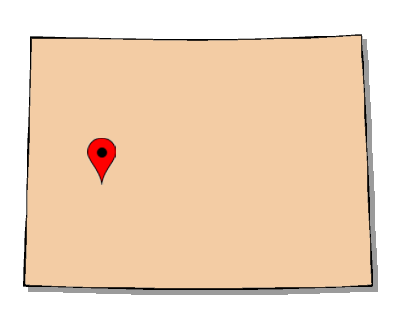
 ocated above Cimarron, Colorado, east of Montrose, the Cimarron Canyon Rail Exhibit is an outdoor display area associated with the Black Canyon of the Gunnison National Park. The display is anchored by a portion of a bridge of Pratt truss design, constructed in 1895. Displayed on the bridge are a steam engine, a wooden boxcar, and a wooden caboose, all 36" narrow gauge. Locomotive #278 was built by the Baldwin Locomotive Works in Philadelphia, Pennsylvania in 1882, for the Denver & Rio Grande's vast narrow gauge network in Colorado. No. 278 served the Crested Butte Branch and the Gunnison railyards, among other assignments. Coupled to the tender are a 1904 wooden boxcar and a 1886 wooden caboose. The locomotive and the other cars have been restored to look as they would have in 1940. In 1976, the trestle was placed on the National Register of Historic Places, due to its significance as the last remaining structure representing the history of the narrow gauge railroad in the Black Canyon of the Gunnison. The lease of the locomotive, tender, and caboose was renegotiated in 1989 and extended to 99 years. Nearby, more D&RGW narrow gauge rolling stock is displayed in the Curecanto National Recreation Area.
ocated above Cimarron, Colorado, east of Montrose, the Cimarron Canyon Rail Exhibit is an outdoor display area associated with the Black Canyon of the Gunnison National Park. The display is anchored by a portion of a bridge of Pratt truss design, constructed in 1895. Displayed on the bridge are a steam engine, a wooden boxcar, and a wooden caboose, all 36" narrow gauge. Locomotive #278 was built by the Baldwin Locomotive Works in Philadelphia, Pennsylvania in 1882, for the Denver & Rio Grande's vast narrow gauge network in Colorado. No. 278 served the Crested Butte Branch and the Gunnison railyards, among other assignments. Coupled to the tender are a 1904 wooden boxcar and a 1886 wooden caboose. The locomotive and the other cars have been restored to look as they would have in 1940. In 1976, the trestle was placed on the National Register of Historic Places, due to its significance as the last remaining structure representing the history of the narrow gauge railroad in the Black Canyon of the Gunnison. The lease of the locomotive, tender, and caboose was renegotiated in 1989 and extended to 99 years. Nearby, more D&RGW narrow gauge rolling stock is displayed in the Curecanto National Recreation Area.
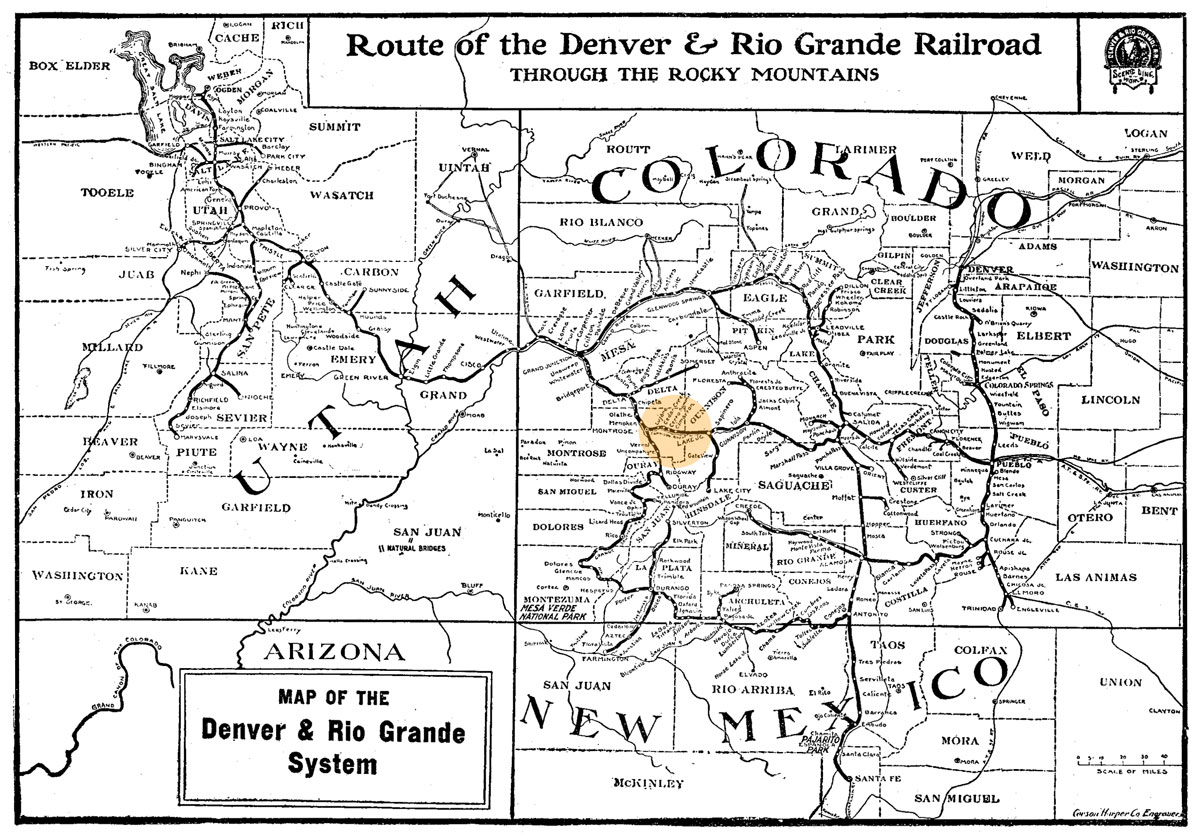
1910 Official Guide map / collection

See also our complete Denver & Rio Grande Western featured fallen flag scrapbook in Mainlines
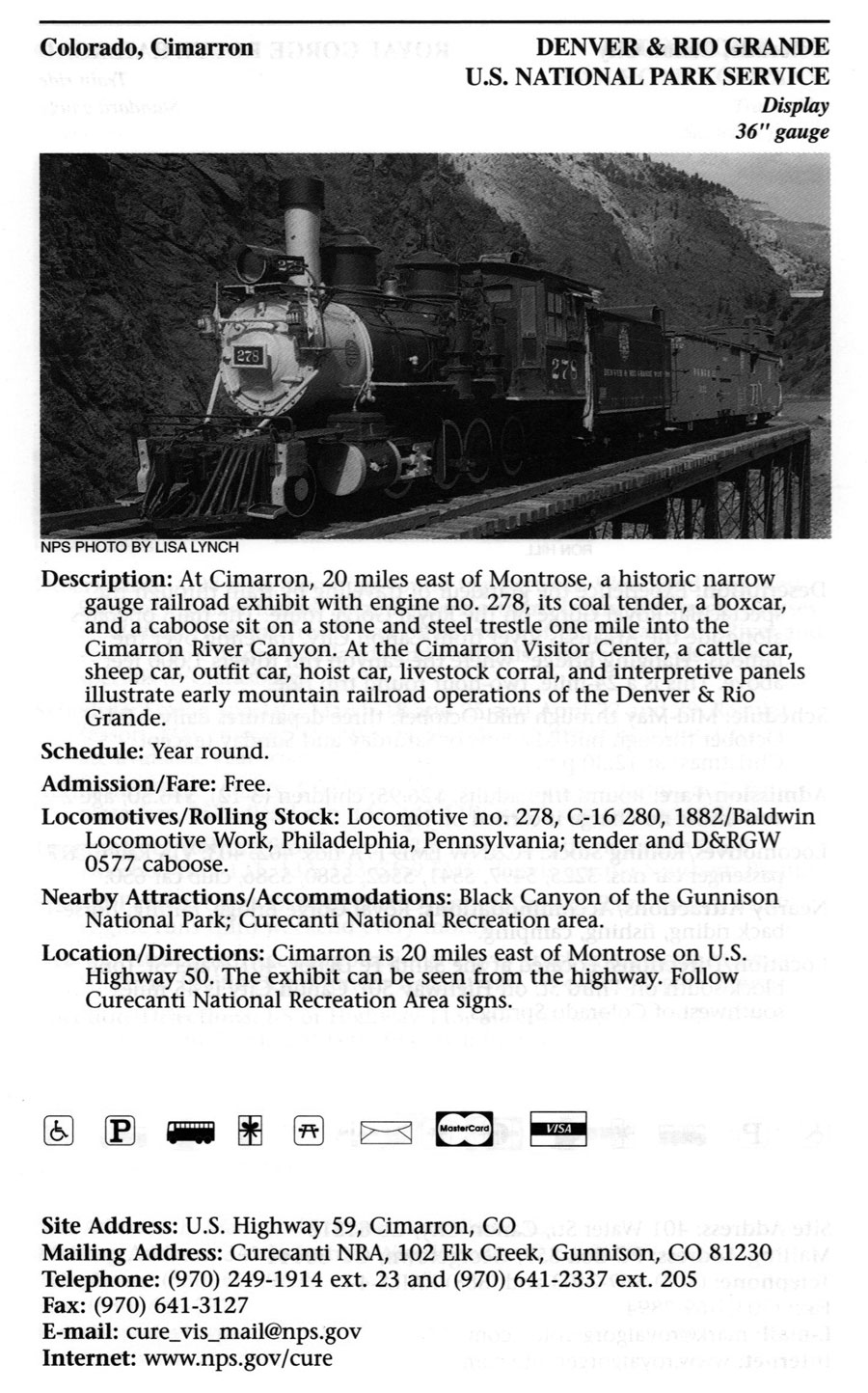
2001 tourist train guide ad / collection


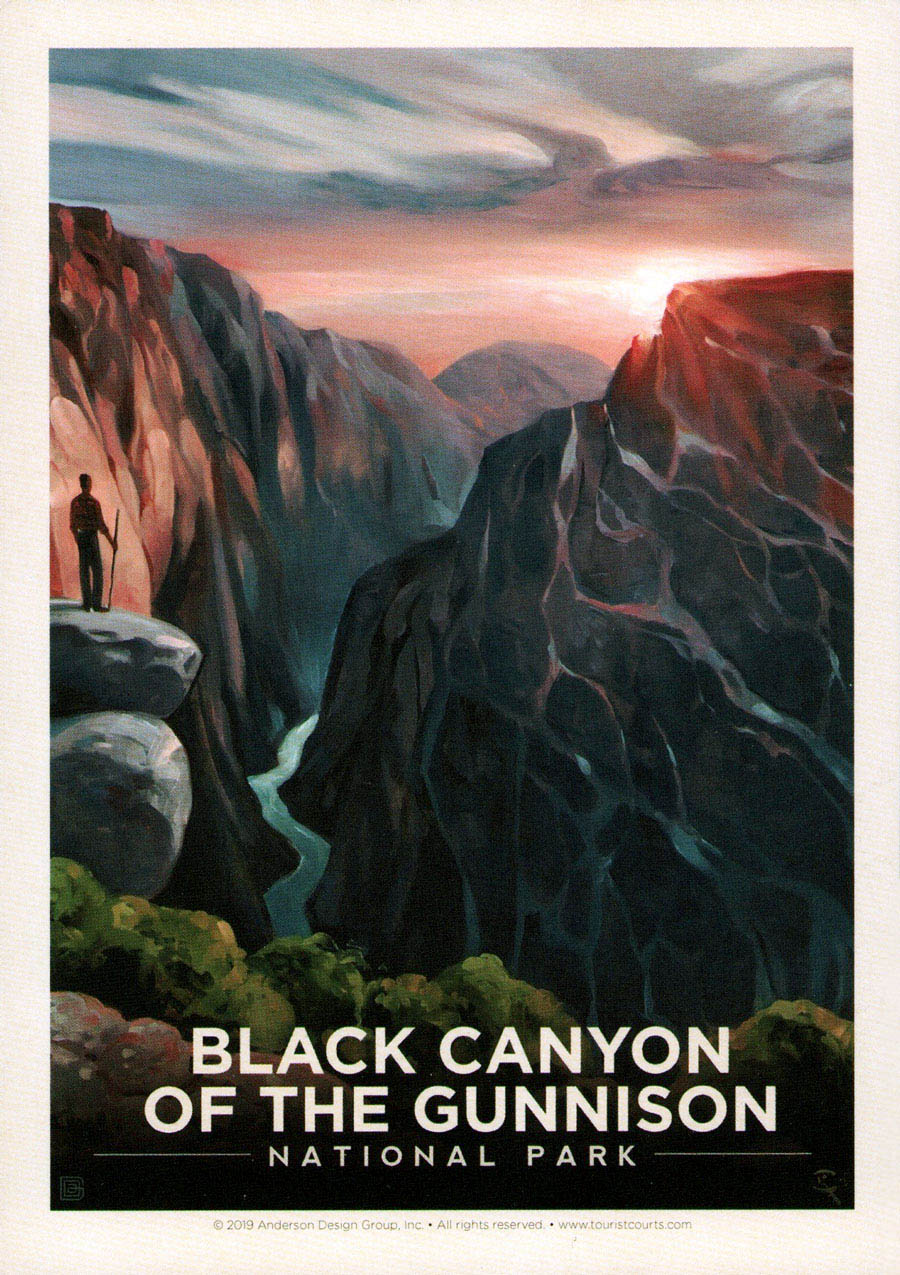
postcard / collection
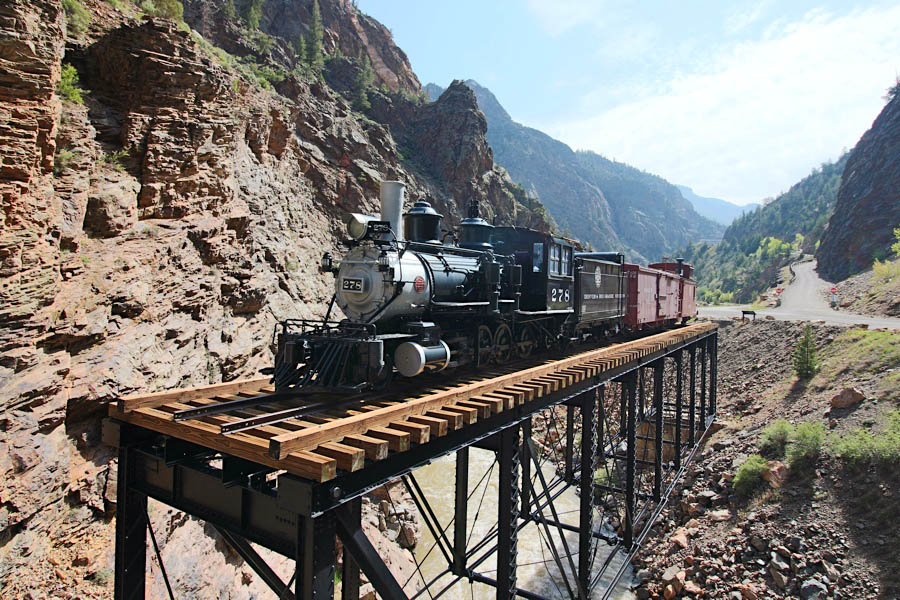
Cimarron, Co / May 2023 / RWH

Click to see the Cimarron Canyon Rail Exhibit plotted on a Google Maps page
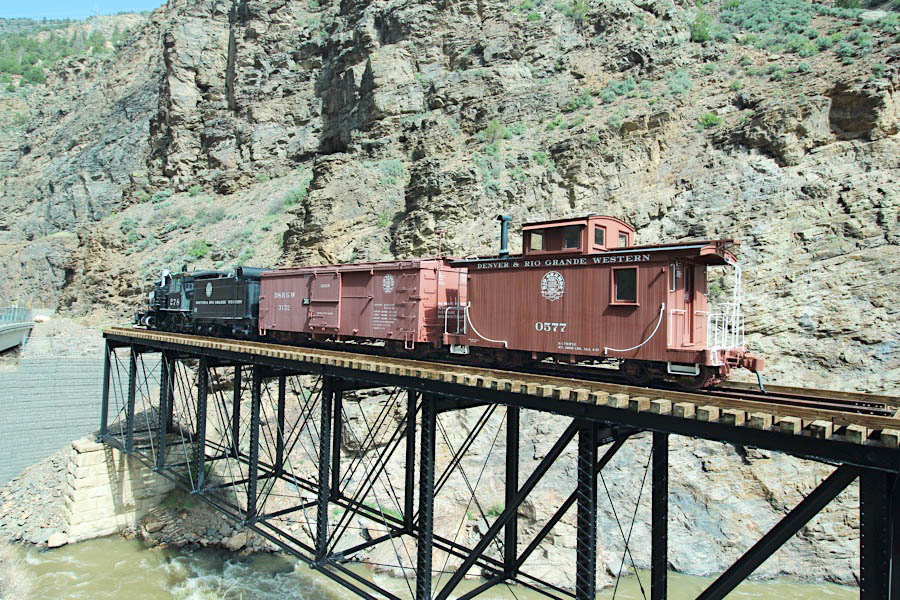
Cimarron, Co / May 2023 / RWH
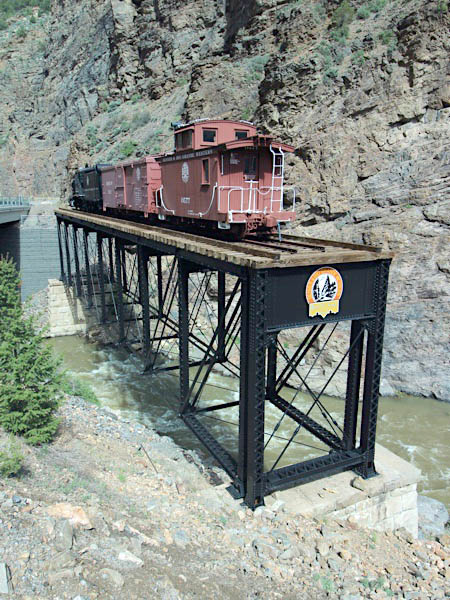
May 2023 / RWH
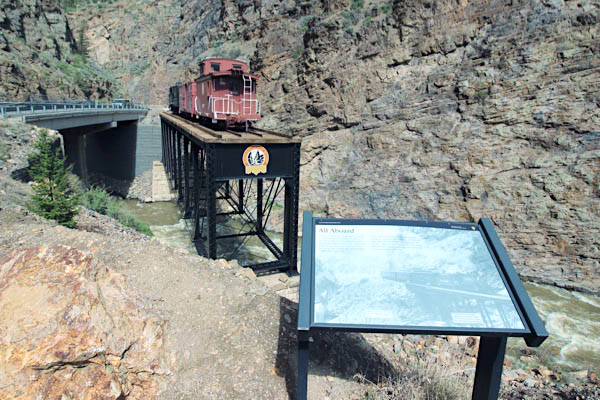
Cimarron, Co / May 2023 / RWH

May 2023 / RWH

Cimarron, Co / May 2023 / RWH

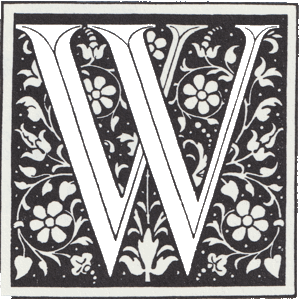 hen the first Denver and Rio Grande train passed through the upper reaches of the Black Canyon of the Gunnison in August 1882, the passengers gazed with wonder at the steep walls above them, the cascading waterfalls and the towering granite point of Curecanti Needle. As the little train found its way out of the canyon and the passengers set their thoughts toward the open vistas ahead, few could imagine the human and monetary cost of constructing this "Scenic Line of the World" through some of the most rugged country in the West.
hen the first Denver and Rio Grande train passed through the upper reaches of the Black Canyon of the Gunnison in August 1882, the passengers gazed with wonder at the steep walls above them, the cascading waterfalls and the towering granite point of Curecanti Needle. As the little train found its way out of the canyon and the passengers set their thoughts toward the open vistas ahead, few could imagine the human and monetary cost of constructing this "Scenic Line of the World" through some of the most rugged country in the West.
 The editor of the Gunnison Review-Press newspaper was on that first train through the canyon in August 1882. He commented that this was "the largest and most rugged canon in the world traversed by the iron horse." Thousands of passengers were thrilled by the ride. According to Rudyard Kipling, who rode through the canyon in 1889: "We entered a gorge, remote from the sun, where the rocks were two thousand feet sheer, and where a rock splintered river roared and howled ten feet below a track which seemed to have been built on the simple principle of dropping miscellaneous dirt into the river and pinning a few rails a-top. There was a glory and a wonder and a mystery about the mad ride, which I felt keenly ... until I had to offer prayers for the safety of the train."
The editor of the Gunnison Review-Press newspaper was on that first train through the canyon in August 1882. He commented that this was "the largest and most rugged canon in the world traversed by the iron horse." Thousands of passengers were thrilled by the ride. According to Rudyard Kipling, who rode through the canyon in 1889: "We entered a gorge, remote from the sun, where the rocks were two thousand feet sheer, and where a rock splintered river roared and howled ten feet below a track which seemed to have been built on the simple principle of dropping miscellaneous dirt into the river and pinning a few rails a-top. There was a glory and a wonder and a mystery about the mad ride, which I felt keenly ... until I had to offer prayers for the safety of the train."
The engineers that took trains through the Black Canyon for the next 67 years may have agreed to the beauty of the canyon, but were extremely fearful of the route - especially during winter. Avalanches and rock falls were common and an engineer and his crew never knew if or when their train would be the next to be swept into the icy waters of the Gunnison River. Despite the dangers and constant repair work, the Denver and Rio Grande made its Black Canyon route the cornerstone of its "Scenic Line of the World" passenger promotions and featured the Curecanti Needle on its emblem.
Denver & Rio Grande Western #278
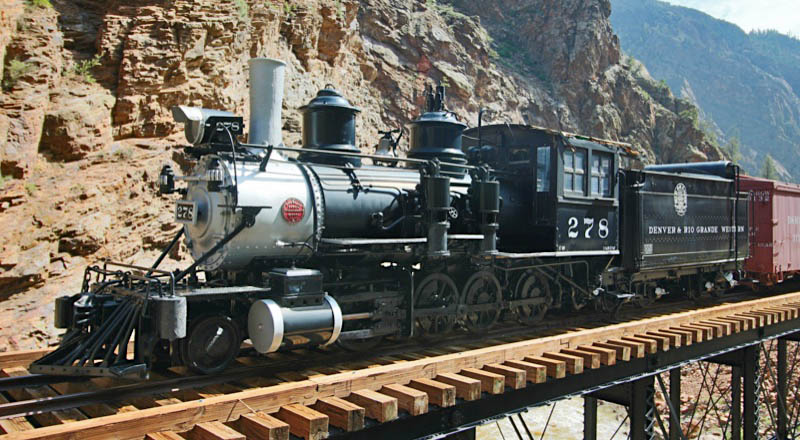
Denver & Rio Grande Western #278
Cimarron, Co / May 2023 / RWH


Denver & Rio Grande Western #278
to Denver & Rio Grande Western #278
to City of Montrose CO, 1953
to National Park Service, 1976
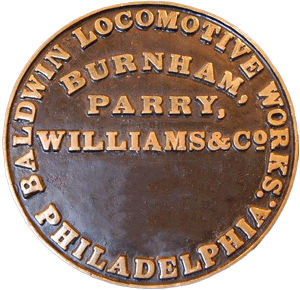

this locomotive also posted in Denver Rio Grande Western Slim Steam Survivors
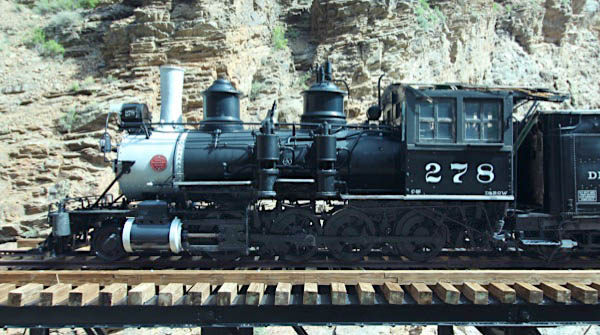
Cimarron, Co / May 2023 / RWH
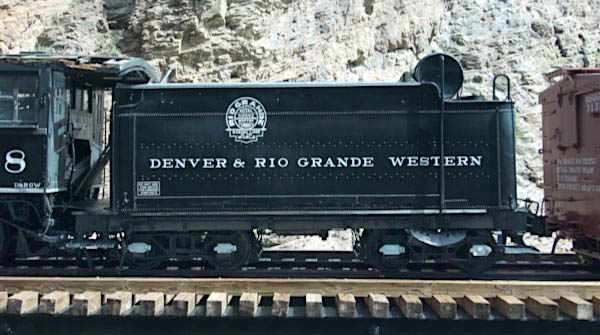
Cimarron, Co / May 2023 / RWH
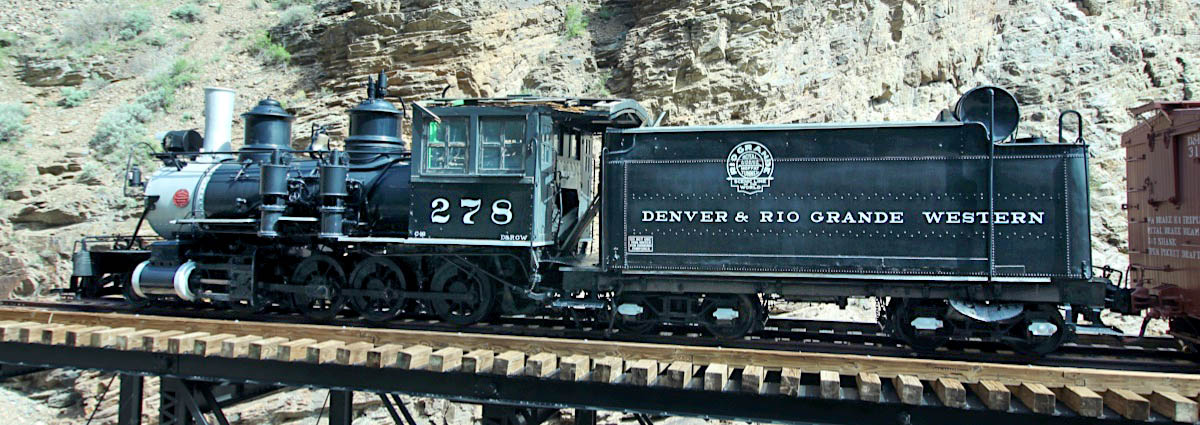
Cimarron, Co / May 2023 / RWH
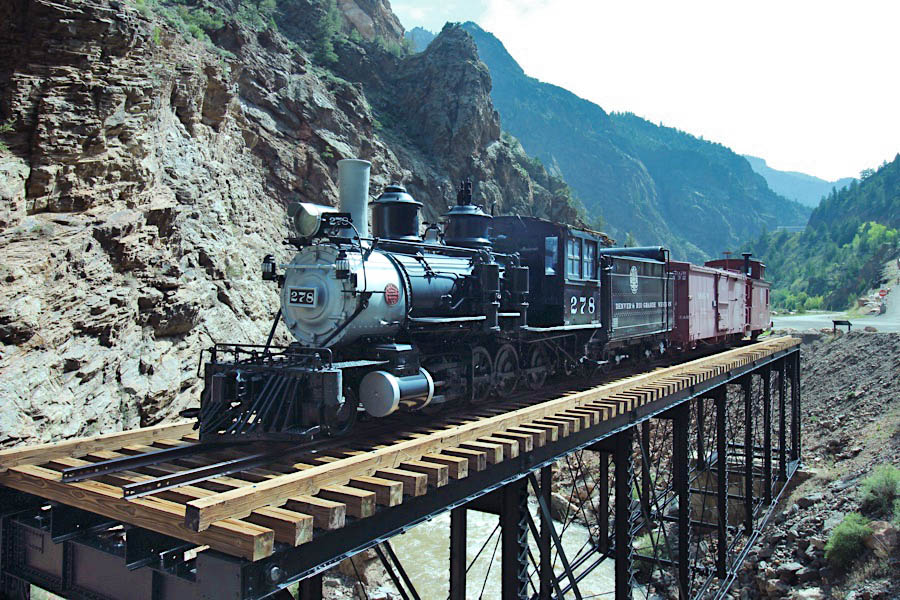
Cimarron, Co / May 2023 / RWH

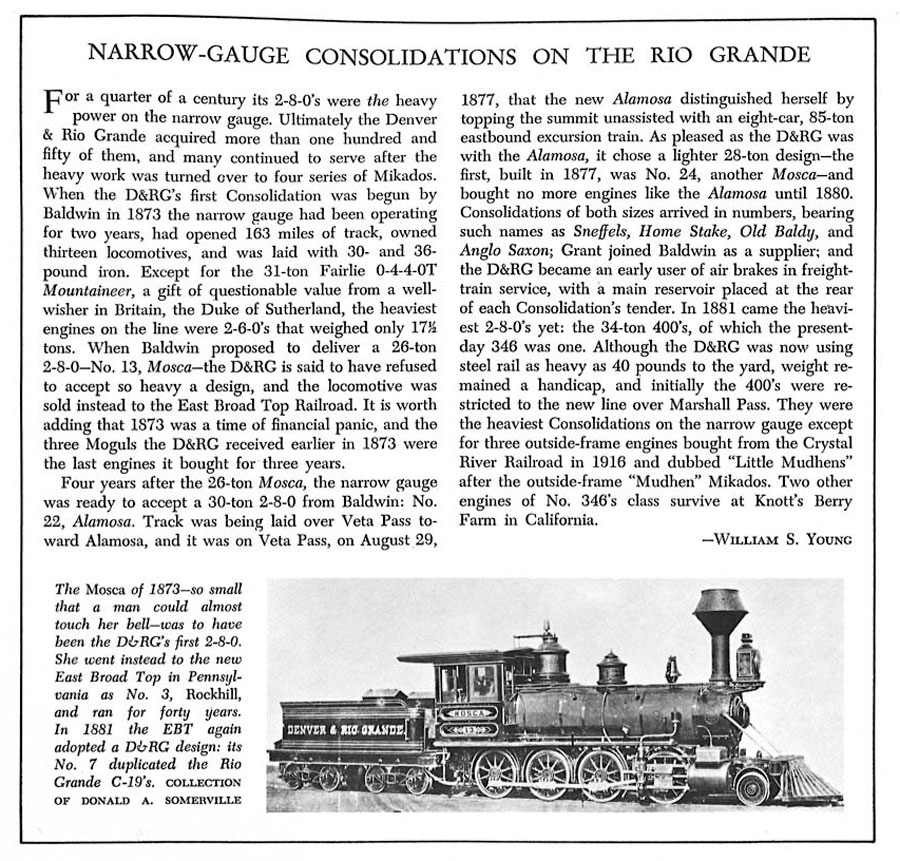
from Railroading magazine 45 - Fall 1972 / collection

Denver & Rio Grande Western #3132
wooden boxcar (1904) / Cimarron, Co / May 2023 / RWH
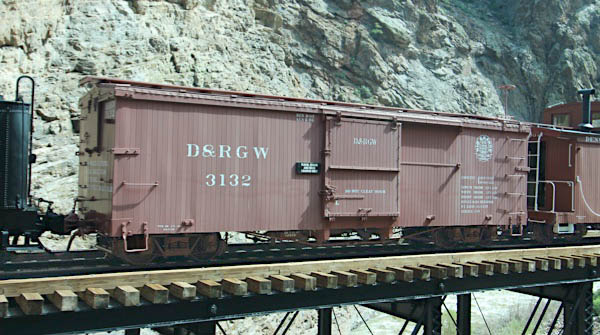
Cimarron, Co / May 2023 / RWH
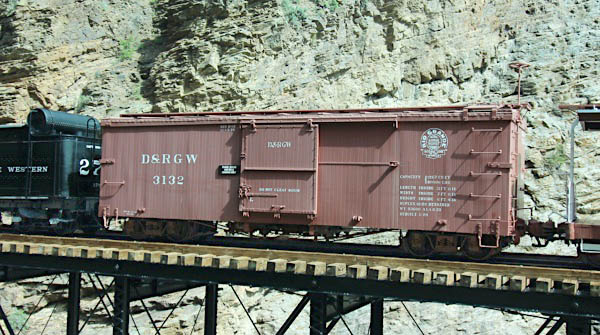
Cimarron, Co / May 2023 / RWH
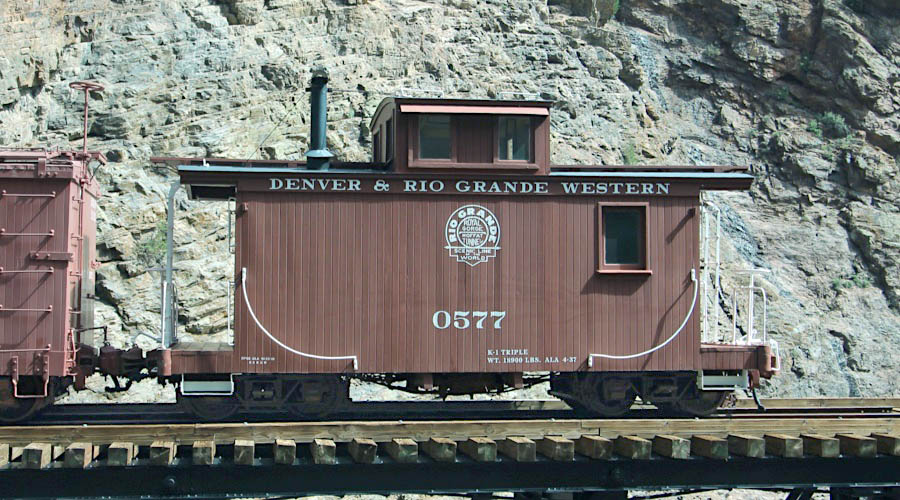
Denver & Rio Grande Western #0577
wooden caboose (1886) / Cimarron, Co / May 2023 / RWH
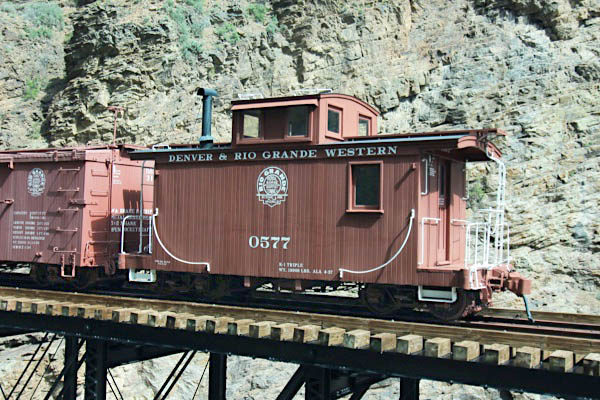
Cimarron, Co / May 2023 / RWH
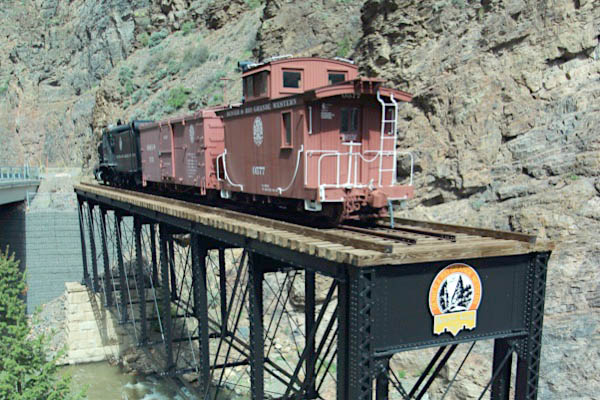
Cimarron, Co / May 2023 / RWH
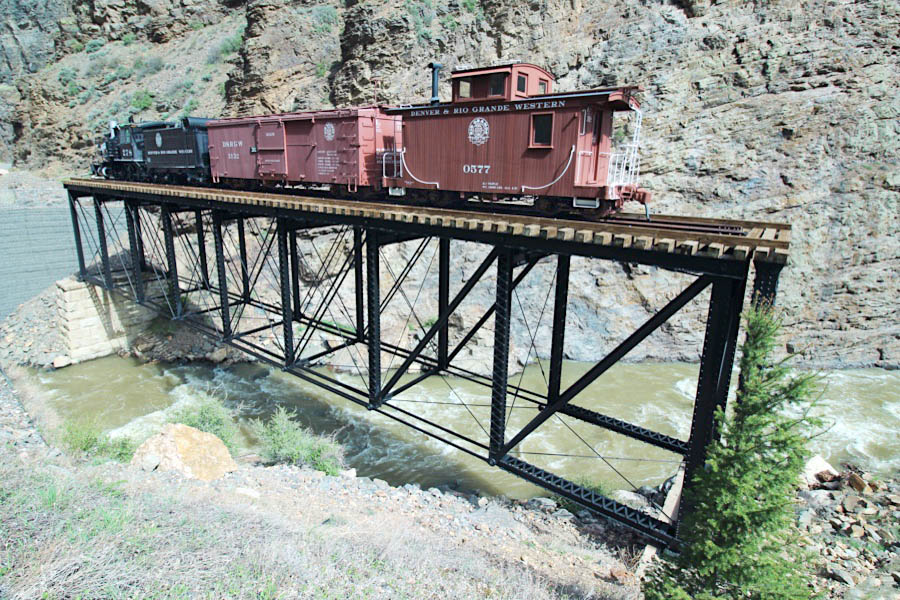
Cimarron, Co / May 2023 / RWH
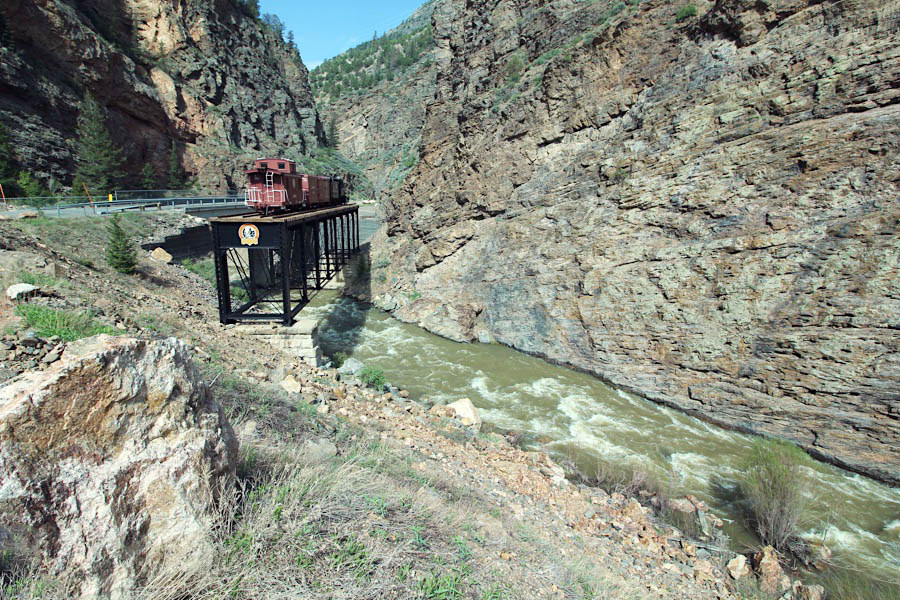
Cimarron, Co / May 2023 / RWH
 Article
Article
Lending a Hand to Restore History
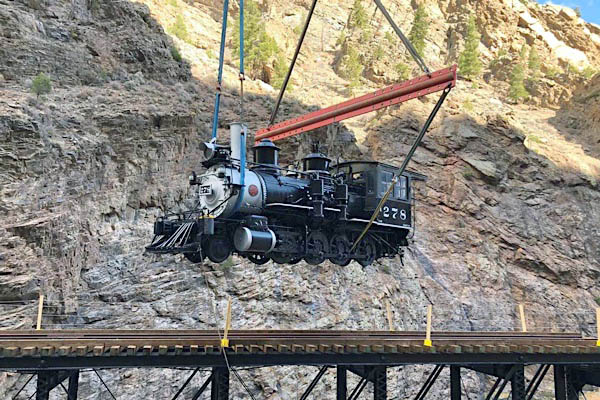 At the mouth of Cimarron Creek, just upstream from where it meets the Gunnison River, stands a reminder of bygone days in Colorado narrow-gauge railroading. Locomotive #278, its coal tender, a boxcar, and caboose stand atop the last remaining railroad trestle along the Black Canyon of the Gunnison route north of Cimarron, Colorado.
At the mouth of Cimarron Creek, just upstream from where it meets the Gunnison River, stands a reminder of bygone days in Colorado narrow-gauge railroading. Locomotive #278, its coal tender, a boxcar, and caboose stand atop the last remaining railroad trestle along the Black Canyon of the Gunnison route north of Cimarron, Colorado.
The Winslow Crane team was hired to rig, lift, swing, and set the newly renovated locomotive, coal tender, boxcar, and caboose back onto the circa 1895 trestle spanning Cimarron Creek.
Using their 300-ton Terex-Demag AC-250-6 all-terrain crane with a variety of rigging and spreader bar configurations, the Winslow Crane team was able to deftly set the 69,000 lb. locomotive, the 20,000 lb. caboose, and the remaining cars on the tracks atop the trestle.
 In 1976, the trestle was placed on the National Register of Historic Places, due to its significance as the last remaining structure representing the history of the narrow-gauge railroad in the Black Canyon of the Gunnison. The lease of the locomotive, tender, and caboose was renegotiated in 1989 and extended to 99 years.
In 1976, the trestle was placed on the National Register of Historic Places, due to its significance as the last remaining structure representing the history of the narrow-gauge railroad in the Black Canyon of the Gunnison. The lease of the locomotive, tender, and caboose was renegotiated in 1989 and extended to 99 years.
Today, the Cimarron Canyon railroad exhibit display aids in our understanding and appreciation of the accomplishments of the trains which ran the Black Canyon of the Gunnison route of the Denver & Rio Grande (D&RG) Narrow Gauge Railroad before the route was inundated by the creation of nearby Morrow Point Dam.
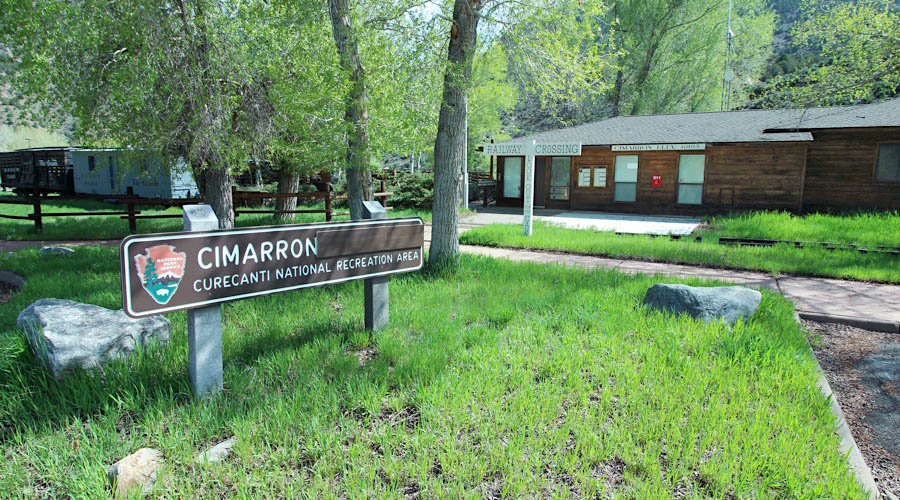
Cimarron, Co / May 2023 / RWH

Click to see the Cimarron Vistor Center area plotted on a Google Maps page
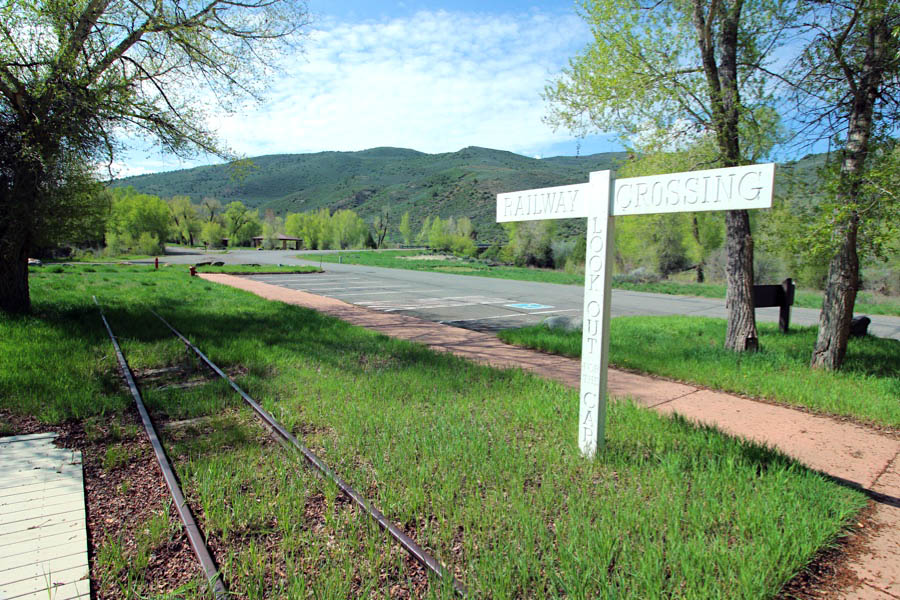
Cimarron, Co / May 2023 / RWH
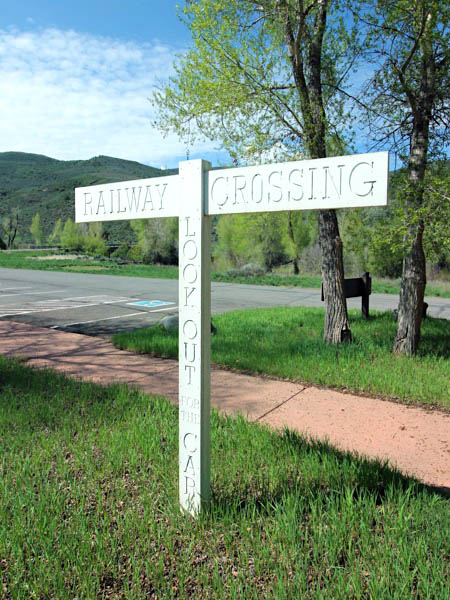
May 2023 / RWH

Cimarron, Co / May 2023 / RWH

Cimarron, Co / May 2023 / RWH
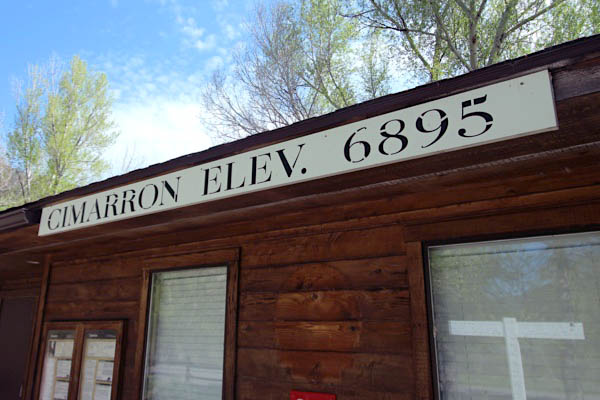
May 2023 / RWH
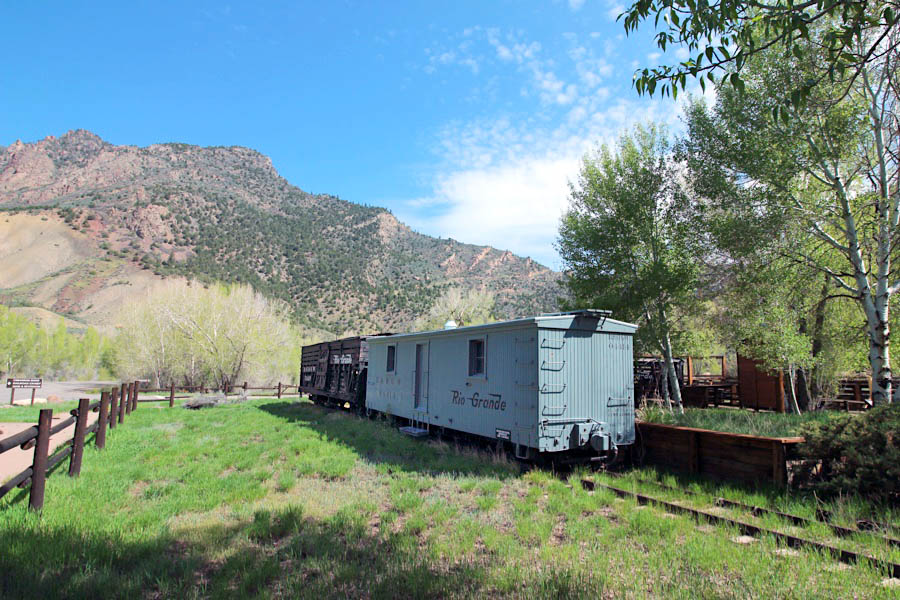
Cimarron, Co / May 2023 / RWH

Cimarron, Co / May 2023 / RWH
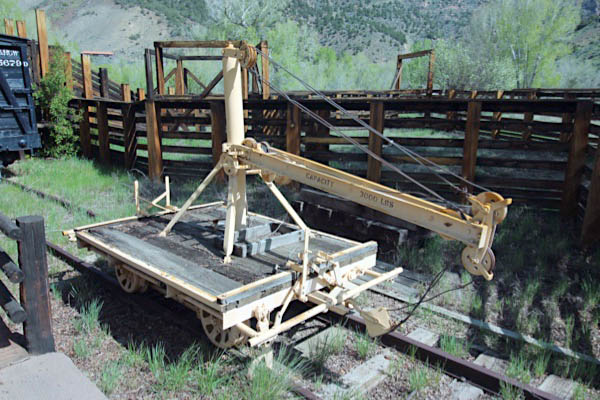
May 2023 / RWH
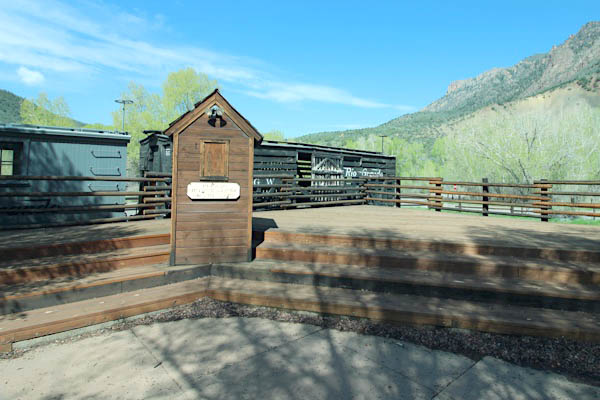
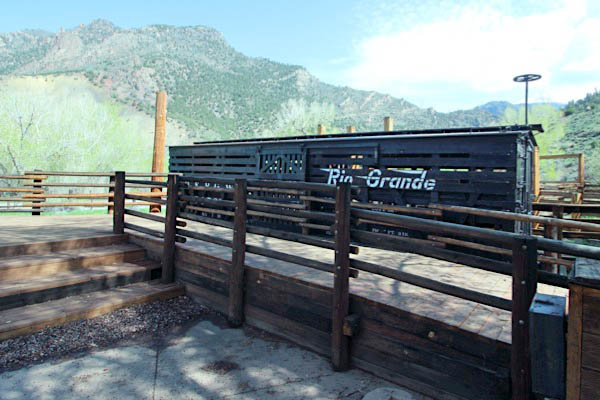
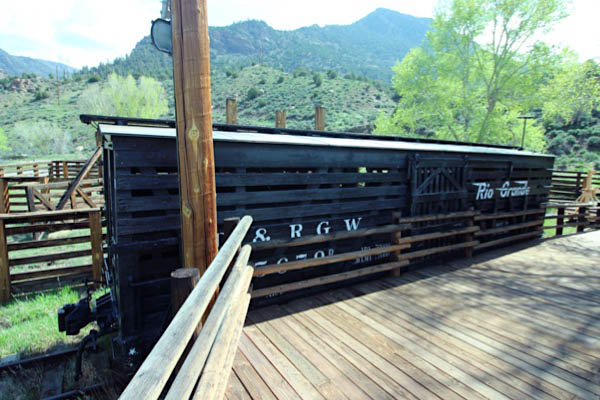

May 2023 / RWH
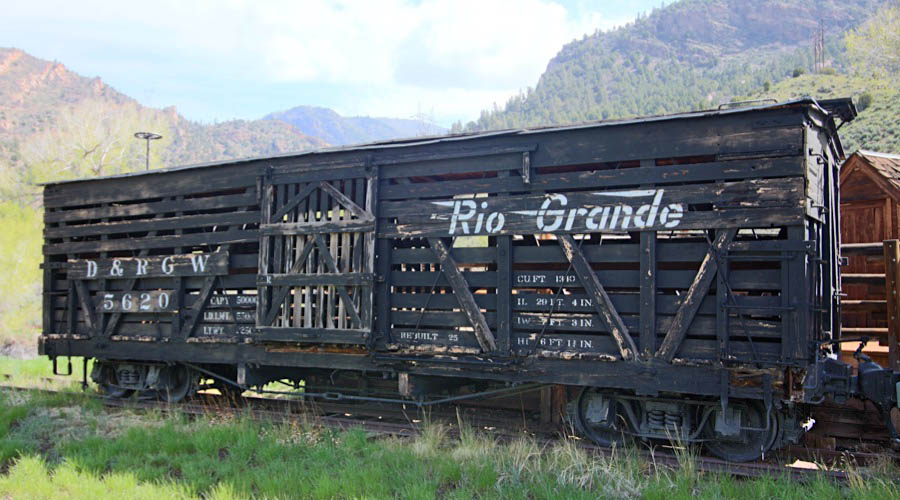
Denver & Rio Grande Western #5620
wooden stock car / Cimarron, Co / May 2023 / RWH
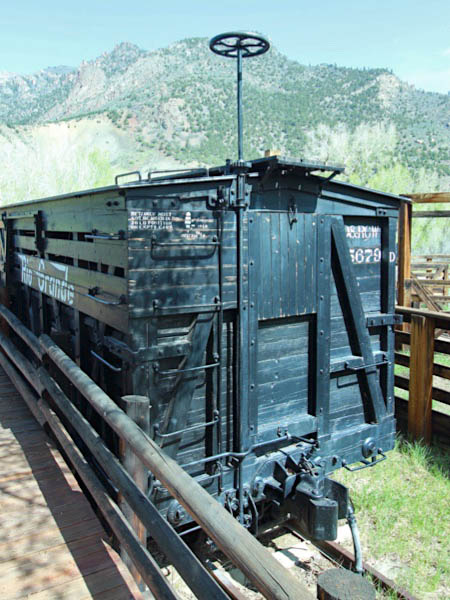
May 2023 / RWH

Denver & Rio Grande Western #4414
wooden MOW car / Cimarron, Co / May 2023 / RWH
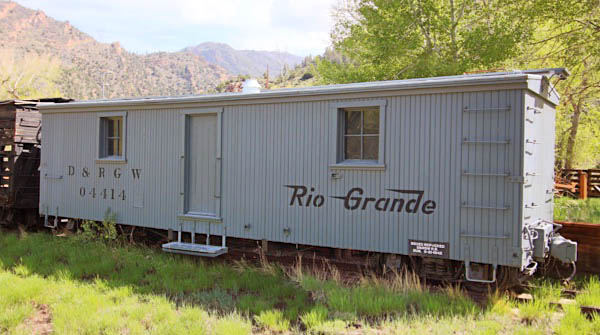
Cimarron, Co / May 2023 / RWH

See also our Denver Rio Grande Western Slim Steam Survivors scrapbook in Mainlines
Links / Sources
- National Park Service Cimarron Canyon Rail Exhibit page
- Black Canyon of the Gunnison National Park page
- Wikipedia article for Cimarron Canyon Trestle
- Winslow Crane Service "Lending a Hand to Restore History"
